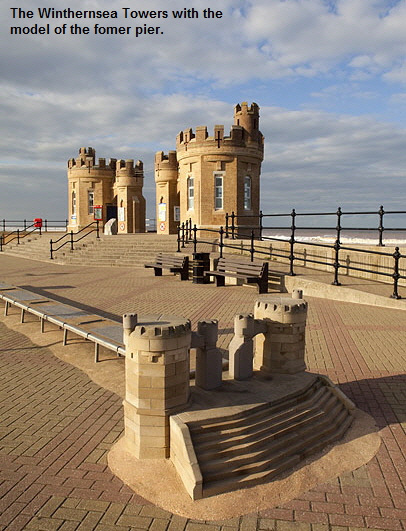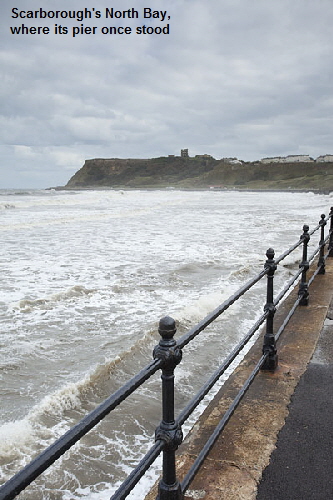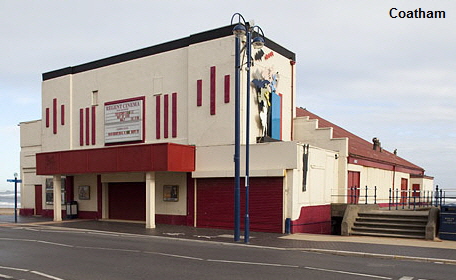|
An then there was one
Craig Roberts looks back at the history of the seaside pier in Yorkshire.
The seaside pier has always been very much a British peculiarity and indeed a feature almost exclusive to England and Wales. Yes, Scotland has its fair share of jetties and landing stages, which was the original purpose of all piers in the beginning, but no pleasure piers.
The trend in the 1800’s, due to the fashionable pastime of hypochondria, was to visit the spa towns such as Harrogate and Scarborough for their curative mineral springs. It wasn’t until Sir John Floyer proclaimed the virtues of seawater though, both for bathing and for drinking that the coastal towns became popular. With the addition of a mineral spring discovered on Scarborough beach, heralding the beginnings of the ‘seaside watering place’, it wasn’t long before they surpassed the spa towns as ‘the’ place to visit.
The birth of the pier came when it was clear that these new visitors needed a better and more dignified way to get ashore from the steam passenger vessels on which they arrived. Up until now it either meant rowing to the beach in a small boat or being carried by a porter, piggyback style.
Yorkshire was once home to six seaside piers dedicated to the pursuit of pleasure, which sprouted from the popularity of the piers down south. All six were built within a dozen years of each other at end of 19th century. They were quite different to the solid landing stages at Whitby and Bridlington offering amusements and a toll charged promenade. In addition they offered orchestras, concerts and plays in their pavilion buildings. Sadly, Saltburn pier is the only one left standing today and stands as a monument to the others that were lost to the sea over the years.
 |
Saltburn was commissioned by the Saltburn Pier Company in 1867 and complete in two years. When opened it stood at 424m (1400ft) long and had a steamer landing stage, together with two kiosks and office accommodation. It was first damaged in 1874, then again in 1875, when the landing stage and part of the main structure were lost to rough seas. It reopened in 1877, but by then, the owners were looking to part hands with it. It received new ownership a year later and the new finance meant it was soon restored to 379m in length, with windshields and a bandstand added, along with the now famous cliff lift. This gave the area new vigour and during the Edwardian era the town blossomed into a popular resort.
More storm damage in followed in 1900 and in May 1924 the Ovenbeg collided with the west side, almost wiping out he pier for good. The boat was wrecked, but the pier survived. All the piers along the Yorkshire coast were sectioned in 1940 for fear of German invasion and Saltburn pier was re-opened in 1952 after repairs totalling £20,000. More storm damage took place in 1961 and in October 1974 the head collapsed. The council applied to have it demolished a year later, but the structure has stood firm. It is now Grade II listed and the millennium saw it further restored and today it stands at 206 metres in length.
Scarborough Pier was the first to be built on the coast 1868 and once occupied pride of place on North Bay. It featured a refreshment room on the end, which doubled in size over the years. Seen as a white elephant of the North Bay, due to the inaccessibility at the time from the South Bay. This popular pier was wrecked in January 1905.
There was certain rivalry between Coatham and Redcar, which each had their own piers despite their combined population being just 3500. Coatham Pier was built in 1872 and stood at the end of Newcome Street. It featured a huge roller-skating rink, which was added in 1876 and proved a big summer attraction. This was hoped by the Coatham Victoria Pier Company to make the pier profitable, but sadly winter storms soon put an end to this. The vessel Birger ended its life in October 1898 and the anchor of this ship is still on display on the promenade at Redcar.
Redcar’s own pier was erected a year after Coatham in 1873. It was quite a size at 1300ft, over double that of Saltburn as it is today and featured distinctive minaret kiosks. This pier survived a full seven years before disaster struck in the form of the sailing brig Luna, which sliced the pier in two. Twice more it was hit and in 1898 it followed tradition of piers in Brighton, Southend, Weston-Super-Mare and caught fire, and burnt the pier head down. During its repair a pavilion ballroom was added which was a great hit with holidaymakers. The pavilion was extended to the esplanade in 1928, which sadly meant the loss of the kiosks.
The pavilion end of the pier survived after the rest of the pier was breached during the war, but structural problems meant its was forced to be demolished, as this was cheaper than repair bills needed on it and it demolition was stated in 1980
October 28th 1880 proved to be a fateful day in the life of the last two piers further down the coast. Withernsea pier was hit twice on this day during a mighty storm and nearby Hornsea pier was also hit, ironically in the same year it was built. The Earl of Derby was one of numerous vessels wrecked on this day. Hornsea pier was repaired and lasted until 1897. Parts of the pier are on display in the Memorial gardens including a wooden pile and length of seating, whilst the entrance gates adorn a house in Beverley. 
On that fateful October day in 1880 Withernsea pier was first hit by the Saffron and later again by Jebez, which hit the end of the pier. All those aboard waited for the storm to clear before safely disembarking, however the fate of those aboard Jebez was less fortunate and all crewmen were killed. This too was repaired and reopened. It survived a near miss in 1890, but lost 300ft of its length in 1890, when it was struck by a Grimsby fishing smack Genesta. With just 300ft left it was a sorry sight and it was noted that a guiding light would have avoided its damage so far, so a lighthouse was duly built. However, this arrived too late as in 1893 a year before the lighthouse was finished it was hit again by the steel vessel Henry Parr, effectively destroying the whole pier.
Today only the old pier gates stand as a reminder to where the pier once stood and of course features on the towns welcoming signs. Had Scarborough Pier been built on the more sheltered South Bay instead, Yorkshire may have two piers surviving today. Nonetheless, the history of its piers is an interesting one and why we should treasure our last surviving one more so.
All images and text copyright © Craig Roberts 2011
|